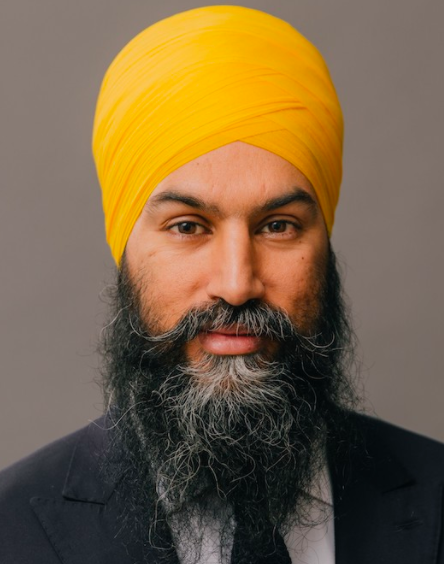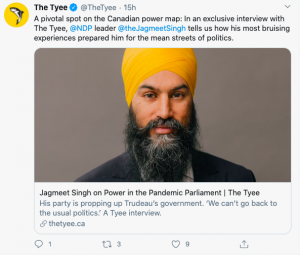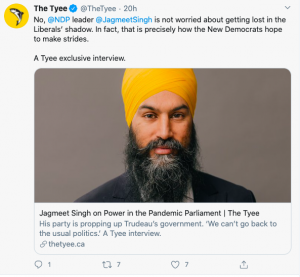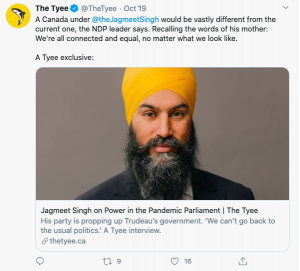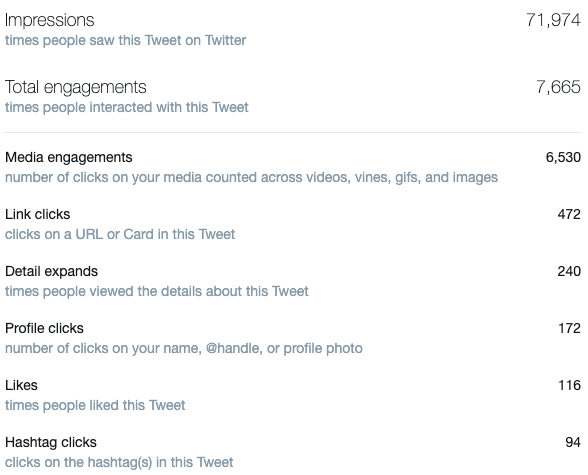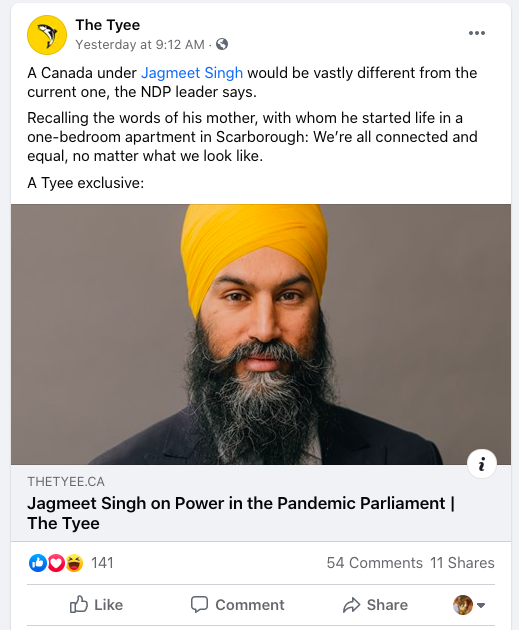When the initial protests against police brutality began, Portland was one of the thousands of cities that participated. Now, about four months later, Portland continues to protest while similar acts have cooled off. This civic engagement has been portrayed in a variety of ways across numerous platforms. However, by comparing and contrasting large conglomerates such as Fox News and Cable News Network (CNN) we can determine how they use their platforms to negotiate agenda-setting, framing, and language. Moreover, these two are more easily comparable as these corporations are similar in terms of size and structure and yet typically offer diametrically opposed coverage.
CNN and Fox News
Both CNN and Fox News are huge media conglomerates. Fox is owned by the Murdoch family, who envisioned it as an appealing alternative of news for conservatives. For years it was run by Roger Ailes who resigned in 2016 under intense scrutiny due to sexual assault and harassment claims. A survey from the Pew Research Center (2020) noted that about 65 per cent of Republicans or Republican-leaning independents trust Fox News for politics or election coverage (para. 5). Additionally, approximately 40 per cent of all Americans trust Fox News, yet about 40 per cent of Americans also distrust Fox News (Pew Research Center, 2020, para. 3). Approximately 94% of Americans have heard of Fox News (Pew Research Center, 2020, para. 4).
On the other hand, CNN is to Democrats what Fox News is to Republicans. CNN was the first 24-hour news network in the United States. According to Pew Research Center (2020), about 67 per cent of Democrats or Democrat-leaning independents trust CNN for their political and election coverage. Yet, about 32 per cent of Americans also distrust CNN (Pew Research Center, 2020, para. 3), which is second only to Fox News. Although both Fox News and CNN are ostensibly opposites, the structure is relatively similar though either are focused on one side of the coin. In short, these outlets likely will use similar tactics as each other but about different issues.
Lastly, both of these outlets live in the United States, which boasts a media system that oscillates between libertarian and social responsibility. A libertarian theory suggests that media should be allowed to provide a myriad of ideas and that the state should let the audience decide (Hallin, 2016, p. 2-3). On the other hand, social responsibility theory suggests that due to unequal access to media and because propaganda could overwhelm the system, then media should regulate itself through professionalism and self-regulation (Hallin, 2016, p. 3). As such the United States fits somewhere between these two theories and Fox News and CNN, in particular, seem to edge towards the libertarian theory because of their ability to churn out the news at a quick rate. In turn, this ability is more or less letting the audience decide rather than the media taking it upon themselves to self-regulate.
Narrowing the field
To narrow the field when comparing these two outlets, it is necessary to shorten the length of time. As stated previously, these protests in Portland have been happening for about four months. However, to look closer at the coverage, only stories produced from September 24, 2020 until October 2, 2020 will be under the microscope. These dates were chosen because on September 23rd it was announced that the police who fatally shot Breonna Taylor would not be indicted on murder or manslaughter charges. This announcement would have repercussions on communities across the United States, especially Portland who had shown no signs of quelling the protests in recent months. Lastly, to further narrow the field, there will be two specific articles used to compare the Portland protests in terms of framing and language: An article published by Fox News on September 29, 2020 and an article published by CNN on September 28, 2020.
Agenda-setting
The concept of agenda-setting is best summarized by Bernard Cohen who claims that the agenda-setting of the news may not tell readers what to think, but it is largely successful at telling them what to think about (Cohen, 1963, p. 13). This concept is more apparent when McCombs and Shaw look at correlations between what readers deemed important issues versus what the media was touting in the news regarding the 1968 presidential campaigns. According to McCombs and Shaw (1972), they found that the data suggested a “strong relationship between the emphasis placed on different campaign issues by the media… and the judgments of voters as to the salience and importance of various campaign topics” (p. 181). Meaning, they found that what the news deemed important issues and the audience’s beliefs about the importance of those topics was heavily correlated with each other. In everyday news, this is relatively easy to discern. A television program leads with the “biggest” news story of the day or a digital outlet will place a topic atop and with a picture to entice the audience to click on it.
In terms of agenda-setting for the Portland protests, this was apparent with www.foxnews.com on September 29, 2020. The protests happening in Portland were found near the top of the outlet just below an article about the upcoming presidential debate. Furthermore, it was bolstered with a picture of the various weapons the police seized during a protest from the night before. CNN, on the other hand, did not have a story about the Portland protests on the same day. However, CNN did have a story from September 28, 2020 that relied on a reporter who attended an event for the Proud Boys, a far-right group. It could be hypothesized that Fox News wanted early morning readers to remember that the debate was that night and that the people who largely identified as opposing Donald Trump potentially had weapons while they protested. The same could be said for CNN who seemingly made more of an effort to produce a video with a far-right group and their behavior than that of the other protestors.
Framing and language
Within agenda-setting, news organizations also use framing to create what they believe to be a favorable point of view from the readership and audience. Entman (1991) sums this up succinctly by explaining that framing is sizing or the “magnifying or shrinking elements of the depicted reality to make them more or less salient” (p. 9). This can be the manner in which news stories are written about or visuals, too.
For example, Entman compares two airplane incidents — KAL and Iran Air incidents — and their coverage. Notably, Entman (1991) shows that although the two incidents were relatively similar by nature, the KAL incident was represented as an attack and a moral problem while the Iran Air incident was considered a tragedy and a technical error (p. 11). Entman (1991) shows that the coverage of the KAL incident was dramatically more than that of the Iran Air incident in Table 1 (p. 10).

Table of coverage for KAL and Iran Air incidents (Entman, 1991, p. 10)
By using the database Factiva, an estimate of the coverage of the Portland protests over the course of the allotted time period by both Fox News and CNN can be hypothesized.

Data estimated from Factiva database on October 2, 2020, at approximately 9:00 AM PST
Since we are comparing the same event, it makes sense that the coverage is relatively equal and follows the same trend. Yet, we can also see how the coverage was bolstered just after the police were not charged with murder in the Breonna Taylor case and we can also see how the coverage increased dramatically after the presidential debate. Notably, during the debate, both the Proud Boys and Antifa were discussed, which both are often touted as extremist right-wing and left-wing groups. During the debate, Donald Trump seemingly avoided denouncing white supremacy by saying to the Proud Boys, “Stand back and stand by” (Kristof, 2020, para. 6). However, given the political leanings of Fox News and CNN, we can hypothesize that the organizations had two different goals on September 30: Fox News was doing damage control and CNN was on the attack.
As stated earlier, visuals can also be used to frame incidents differently. Again, using Entman’s research about the KAL and Iran Air incidents we can see a stark contrast with these visuals.

Images of Time and Newsweek KAL covers from Entman (1991)
The images used on the covers of Time and Newsweek about the KAL incident were considerably more aggressive-looking. They included words such as “kill,” “murder,” and “shooting” to describe the incident. This seems less like a technical issue and much more like a moral dilemma. Additionally, Time shows an exploding aircraft, while Newsweek uses a target over an airplane. Again, these images leave little to the imagination and are much more emblematic of an attack rather than a tragedy.

Time and Newsweek covers for Iran Air incident from Entman (1991)
On the other hand, the Iran Air incident had a cover from Newsweek that considered the “why” behind the incident much less condemning it as an act of violence. Moreover, the Time cover only included a small corner covering the incident. The language, like the Newsweek cover, considered what went wrong with the incident rather than condemning it.
The contrasting visuals between Fox News and CNN regarding the Portland protests initially standout. On September 29, 2020, Fox News published an article about a protest turning violent. They included among their visuals images of various weapons seized by the police. These images of weapons flashed above the headline on the front page of the digital website and were within the text as well.

Fox News headline with a photograph of the seized weapon
Additionally, the big and boldest phrase “violent intentions” is plastered on top of the image of the gun. This language — much like the Time and Newsweek covers — tells a much different story than perhaps what took place. It invites the audience to believe that the protestors were willingly and knowingly going to attack the police. Yet, within the article by Fox News, it offers that the police had pulled over a car with a red cross on it, which typically symbolizes a medic vehicle, and inside the car they found the weapons that they seized. Additionally, they admitted that the investigation into the handgun was still an ongoing matter.
Still, the image of the handgun and the other weapons were used to visualize this incident with additional language that suggests violence. Moreover, the headline text sympathizes with the police although the story admits that the police moved in on the unpermitted march first because demonstrators had shields, body armor, and helmets, which concerned the police. Lastly, this article in particular only used the police as sources who failed to determine if all the protestors and arrestees were a part of the same group.
In contrast, CNN published an article with a much different tone and visuals on September 28, 2020. Although these two articles were written about two separate nights, there are reasonable comparisons to be made. First, CNN used a video under the headline which emphasized both the anti-police violence protestors and the protestors who aligned with far-right groups. However, within this video, there is more airtime given to the anti-police protestors while the far-right protestors are skewed with frames of more aggressive tactics.

CNN’s first image in the story about Portland protests
Additionally, CNN led the story with an image of police detaining a protestor. The protestor is wearing a mask and goggles, but it is difficult to discern if she had a helmet or shield on her, which was the complaint of the police in the Fox News story. Further on in the article, there is an image of the police draped in riot gear with a shadowy effect from their own lights blurring out their faces, which effectively villainizes the police.
These are vastly different images than the images from Fox News. Yet, the text that coincides with the article is ostensibly more balanced than the images. It is sourced from all sides: anti-police violence protestors, far-right protestors, police, and a statement from Governor Kate Brown. However, the text also begins with the anti-police violence protestors as the main voice and, by virtue of leading the article, those protestors get more airtime. A common reader might read the initial few paragraphs and focus on the photos yet gloss over the bulk of the text.
Lastly, regarding the digital versions of these articles, both Fox News and CNN use hyperlinks and keywords to garner a certain audience through search engine optimization (SEO). Digital media uses SEO to get more traffic to their websites. With this, they utilize certain keywords and hyperlinks to get near the top of search engines. Since Fox News and CNN already have certain leanings, they both use keywords in their hyperlinks that reflect this leaning. In this instance, Fox used “sergeant,” “hospital,” “assault,” and “officers” in its hyperlink while CNN used “Proud Boys,” “Antifa,” and “BLM.” In effect, this is another way of framing and agenda-setting in a contemporary setting.
Conclusion
Although the tactics by CNN may seem inconspicuous compared to Fox News at times, they still are framing the story in a way that the large base of CNN’s readership will accept. It could be easy to conclude with this analysis that Fox News is more biased than CNN. However, it is actually difficult to determine when considering that these events took place far away and both outlets have a certain agenda to stand by. Additionally, considering that the typology of the United States could very well lean towards the libertarian theory, these could merely be attempts of larger news corporations letting the audience decide if they are truthful and accurate or not, notwithstanding influence by way of agenda-setting and framing. Of course, objectivity in journalism is not as easily determinable as it was once believed to be; therefore, these outlets are rough examples of how objectivity can be misconstrued with simple maneuvers such as photograph placement or eye-catching language. While these tricks may not necessarily tell the audience what to think, as Bernard Cohen would say, it certainly is successful at telling them what to think about.
References
Cohen, B.C. (1963). The press and foreign policy. Princeton University Press
Entman, R. M. (1991). Framing US coverage of international news: Contrasts in narratives of the KAL and Iran Air incidents. Journal of communication, 41(4), 6-27
Factiva (2020). Estimated Fox News and CNN coverage of search “Portland” between September 24, 2020 and October 2, 2020 [Infographic]. https://global-factiva-com.ezproxy.library.ubc.ca/ha/default.aspx#./!?&_suid=160166583583306521455045069511
Gramlich, J. (2020, April 8). 5 facts about Fox News. Pew Research Center. https://www.pewresearch.org/fact-tank/2020/04/08/five-facts-about-fox-news/
Hallin, D. C. (2016). Typology of Media Systems. Oxford Research Encyclopedia of Politics. https://doi.org/10.1093/acrefore/9780190228637.013.205
Kristof, N. (2020, September 30). Opinion | Trump Calls on Extremists to ‘Stand By.’ The New York Times. https://www.nytimes.com/2020/09/30/opinion/trump-election-debate.html
McCombs, M. E., & Shaw, D. L. (1972). The agenda-setting function of mass media. Public Opinion Quarterly, 36(2), 176-187.
McLaughlin, E. C. (2020, September 28). Portland protests remain largely peaceful until night falls and police are targeted, authorities say. CNN. https://www.cnn.com/2020/09/27/us/portland-protests-proud-boys-antifa-blm/index.html
Wallace, D. (2020, September 29). Portland unrest sends police sergeant to hospital; officers doused in chemicals, 24 arrested. Fox News. https://www.foxnews.com/us/portland-protest-sergeant-hospital-chemicals-officers-assaulted


